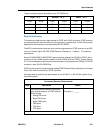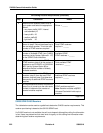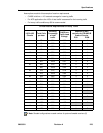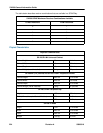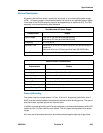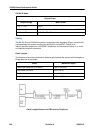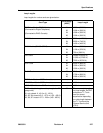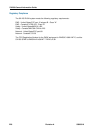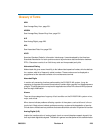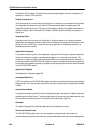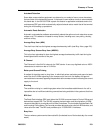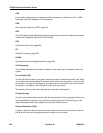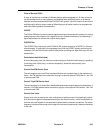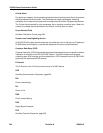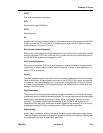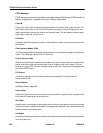
50003510 Revision A 229
Glossary of Terms
ABH
See Average Busy Hour, page 231.
ABSBH
See Average Busy Season Busy Hour, page 231.
A/D
See Analog/Digital, page 229.
ADL
See Associated Data Line, page 230.
ASCII
American Standard Code for Information Interchange. It was developed by the American
Standards Association for both synchronous and asynchronous data transmission between
DTEs. Characters consist of an 8-bit binary code and incorporated parity bits.
Abbreviated Dialing
Abbreviated dial gives users the ability to dial abbreviated speed call codes, which substitute
for a system wide list of frequently-called numbers. These numbers can be displayed or
programmed at the attendant console or the maintenance terminal.
Absorbed Digits
In certain call processing functions performed by the SX-200 EL/ML system, it may be
necessary to suppress the onward transmission of certain digits received in a dialed sequence
of digits. This digit absorption is required for applications such as DID calls and ARS purposes.
See also digit modification.
Alarms
There are three categories of urgency of fault condition on the SX-200 EL/ML system: minor,
major, and critical.
Minor alarms indicate problems affecting a portion of the system, such as failure of a line or
trunk circuit. Major alarms indicate problems causing a system-wide degradation of service.
Critical alarms indicate serious problems that cause automatic activation of system fail transfer.
Analog/Digital (A/D)
Implies the transformation of analog signals (such as normal telephone speech signals) into
their equivalent digital data signals. The device in general use that performs this transformation



